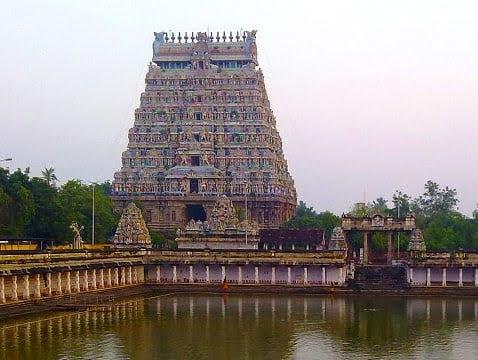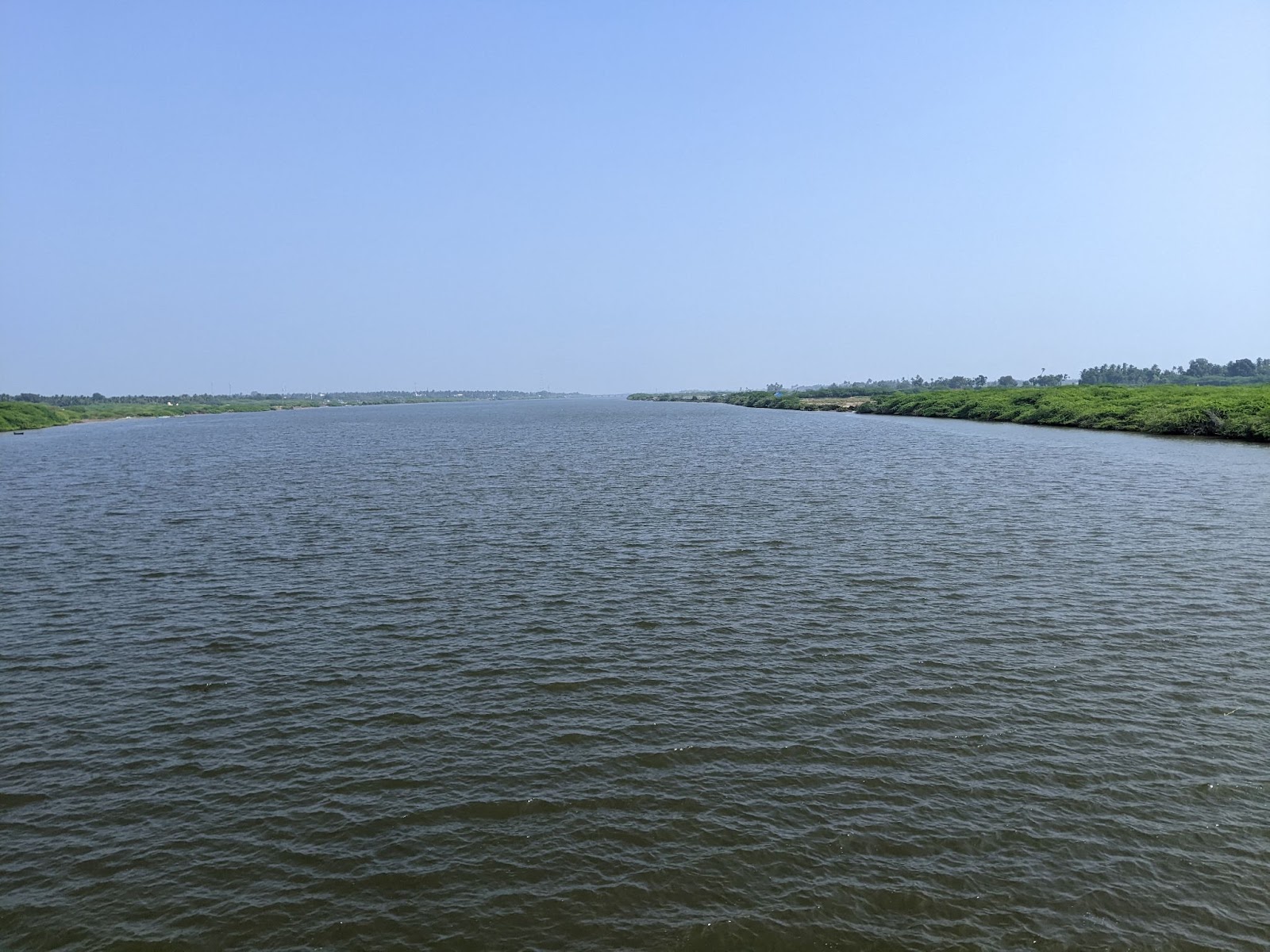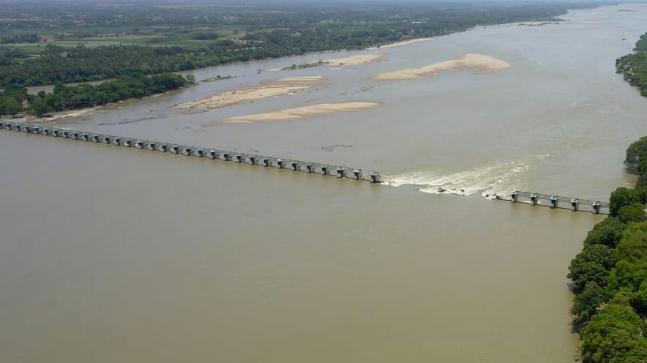- The Temple is called is either Govindaraja Perumal Temple or Chidambaram Natarajar Temple
- Govindaraja Perumal Temple is a prominent Vishnu shrine.
- It is one of the 41st Divya desam among 108 divya desams.
- It is believed that Vishwakarma, a celestial sculptor built this temple.
- This is unique in the sense that it is located in the famous Thillai Nataraja Temple, dedicated to the dancing form of Shiva.
- This temple is in the well-known Chidambaram town in the Cuddalore district of Tamil Nadu.
- Here, Vishnu is worshipped as Lord Govindaraja, and his consort is Pundarikavalli.
- This is an ancient temple built through generous contributions from the rulers of many dynasties like Pallava, Chola, Pandya, Chera, and Vijayanagara.
PURANIC SIGNIFICANCE 1:
- The place used to be known traditionally as Thillai or Thillaivanam, named after the grove of Tillai trees that are found here in large numbers.
- As per a legend, Lord Govindaraja came down to this place for the sake of sage Kanwar and the Dikshidars of the Nataraja temple.
- But there is an interesting story linking the Gods Shiva and Vishnu, and also Goddess Kali, to this place.
- Once, there arose an argument between Shiva and his consort Parvati, as to who was better at dancing.
- A competition was held in Thillai Vanam with Vishnu as the judge.
- It was a tough duel with an exemplary performance by both Shiva and Parvati, when Shiva chose to perform Rudra Tandava, by picking up his earring with his foot and wearing it in the ear by raising his leg to that level. But being a woman, Parvati could not perform this feat.
- Thus, the judge Vishnu declared Shiva the winner, while Parvati, as Kali, withdrew to the other part of the town, where she is worshipped as Thillai Kali.
- After that Shivan displays as Nadarajar and tells Mahavishnu to stay there. And so Mahavishnu stayed in the Palli Konda Perumal form (Lying Perumal).
PURANIC SIGNIFICANCE 2:
- In the 12th century CE, Chola monarch Kulothunga II, an ardent Shaivite, is said to have removed the idol of Govindaraja from the shrine.
- Some followers rushed the festival deity to Tirupathi, where it is still worshipped in the Govindaraja Perumal temple downhill. Some think it was the saint Ramanuja who saved the processional idol from destruction.
- King Krishnappa Nayaka overcame opposition to reinstall the image of the primary god Govindaraja at the temple in the 16th century.
PURANIC SIGNIFICANCE 3:
- This is a land devotees seek for salvation.
- Kaveran the king of Kalinga had a daughter named Lopamudra married to Sage Agastya.
- Sage changed Lopamudra as River Cauvery.
- Kaveran and his wife bathed in the river everyday and asked their daughter Lopamudra-Cauvery the means of attaining salvation.
- She advised them to go to Thillai Nagar and perform penance on Lord Vishnu to realise their wish and darshan of Lord.
- Pleased with their penance, Lord appeared with Mothers Sridevi and Bhoodevi and granted salvation to the couples.
- As a tradition, Lord Brahma on the naval chord of Lord Vishnu is seen in a sitting form.
- Differing from this tradition, Brahma is in a standing form in this temple. It is said that Brahma chose to stand as a respect to Lord Vishnu who was to judge the winner in the dance competition taking place in the Chitra Sabha.
- The Lord is looking at the sky as the place comes under the Akash category.
- Divine serpent Adisesha, serving as the bed of Lord Vishnu, desired to have the Thandava Darshan of Lord Shiva.
- Lord Vishnu sent him to have his desire fulfilled.
- Adisesha made friends with Maharshi Vyakrapada and had the darshan of Lord Shiva.
- He also had the blessings of Lord Vishnu here and returned to the milk ocean to resume his job as bed of Perumal.
- He has his shrine in the prakara at the feet of Lord Vishnu.
- It is believed that prayer to Adisesha would bring the dual benefit of the blessings of Lord Shiva and Lord Vishnu.
- A demon woman named Dhilli by name prayed to Lord Perumal to be a forest herself full of trees and that Lord should grace the place with His presence.
- She became Thillai trees.
- Named after her, the place came to be known as Thillai Nagar.
- Mother Pundarikavalli graces from a separate shrine.
- The Padukas of Lord are in a shrine in the prakara ensuring salvation to the devotees.
- Garuda Bhagwan holding the devotee elephant Gajendra, Lords Narasimha, Venugopala and Maharshi Patanjali, Sri Andal and Sri Anjaneya also grace the devotees from their shrines in the prakara.
Adisesha had darshan of Lord Shiva here:
- Divine serpent Adisesha, serving as the bed of Lord Vishnu, desired to have the Thandava Darshan of Lord Shiva.
- Lord Vishnu sent him to have his desire fulfilled.
- Adisesha made friends with Maharshi Vyakrapada and had the darshan of Lord Shiva.
- He also had the blessings of Lord Vishnu here and returned to the milk ocean to resume his job as bed of Perumal.
- He has his shrine in the prakara at the feet of Lord Vishnu. It is believed that prayer to Adisesha would bring the dual benefit of the blessings of Lord Shiva and Lord Vishnu.
Thillai Nagar:
A demon woman named Dhilli by name prayed to Lord Perumal to be a forest herself full of trees and that Lord should grace the place with his presence.
She became Thillai trees. Named after her, the place came to be known as Thillai Nagar.
Akasha Sthalam:
The Lord is looking at the sky as the place comes under the Akash category.
Lord Vishnu darshan to Sage Kanva & 3000 Dikshidars:
Legend has it that Govindaraja Perumal is believed to have descended for sage Kanvar and the 3,000 Dikshidar of the Thillai Natarajar temple.


